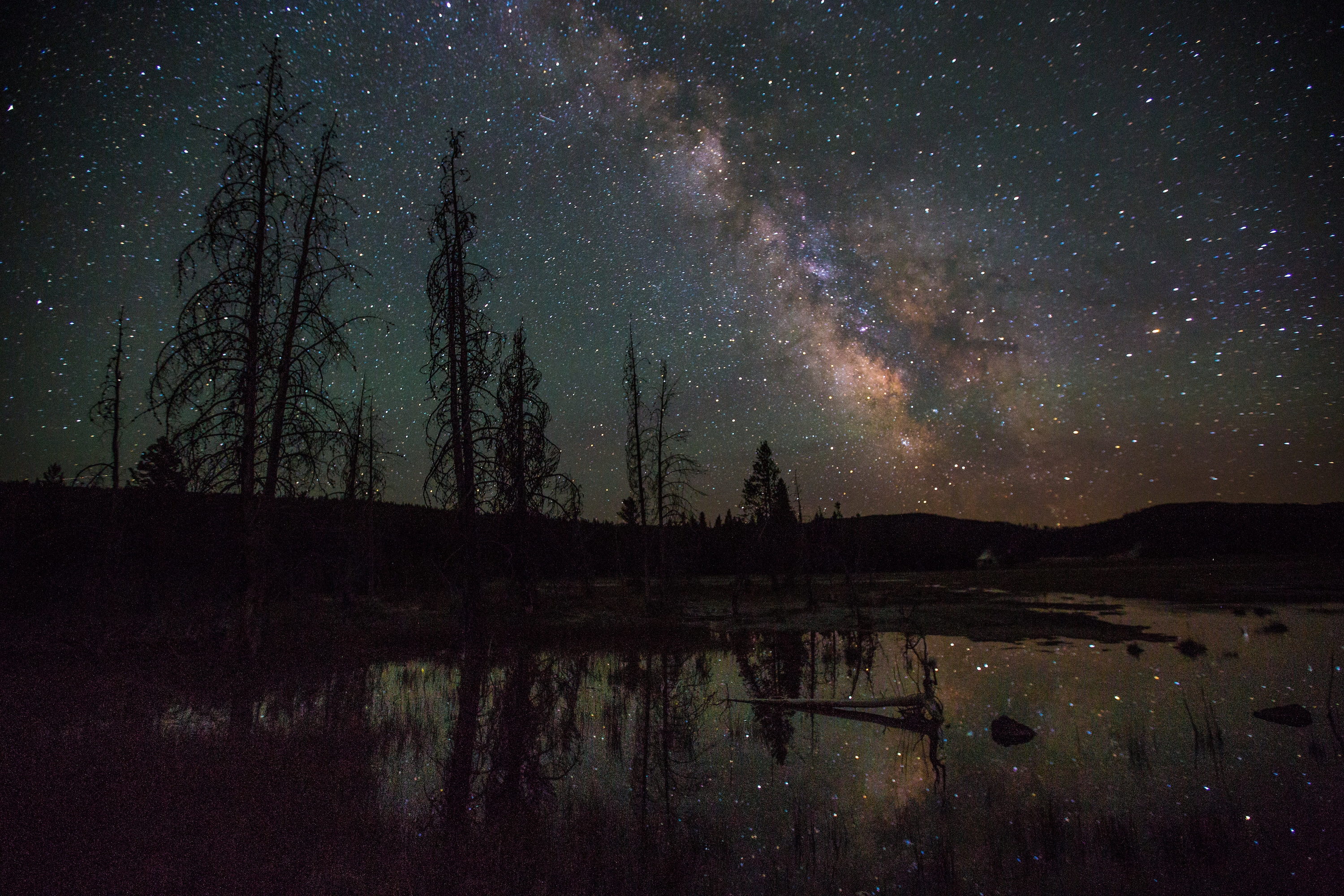Look to the night skies outside your house or apartment and maybe you’ll see the faint outlines of the Big Dipper beyond the street lights, or the glimmering North Star past a row of headlights on the nearest highway.
Head into the wild, though, and thousands of stars, planets and satellites will sparkle all night long. Time your visit right and you might even spy the Milky Way.
Whether you’re taking starry night sky photos or simply want to admire the views, here are 15 spots throughout the United States for staggering stargazing.
Big Bend National Park, Texas
Big Bend National Park, straddling the Texas-Mexico border in the heart of the Chihuahuan Desert, sits far from the region’s biggest cities and towns—and boasts the least amount of light pollution of any national park in the lower 48 states.
In 2012, the International Dark-Sky Association named Big Bend an International Dark Sky Park. In doing so, it shouted out the myriad ways Big Bend works to protect its night skies—through shielding LED lights, cutting power consumption and installing motion sensors and timers so that lighting turns on only when necessary.
These days, the park works to help visitors understand and appreciate that astral allure through star parties, moonlight walks and other interpretive events that show off constellations, planets and even the Milky Way.

Big Cypress National Preserve, Florida
One of the darkest spots east of the Mississippi River, this South Florida preserve sits next door to the world-famous Everglades. The massive freshwater swamp—it’s nearly the size of Rhode Island—is mostly known for scenic drives, short hikes and water-based activities, limiting the kind of light pollution that might cause washed-out skies.
As such, stargazing is a popular pastime at the park, where rangers lead astronomy programs that include constellation tours and telescope viewings of stars, planets, nebulae and even galaxies.
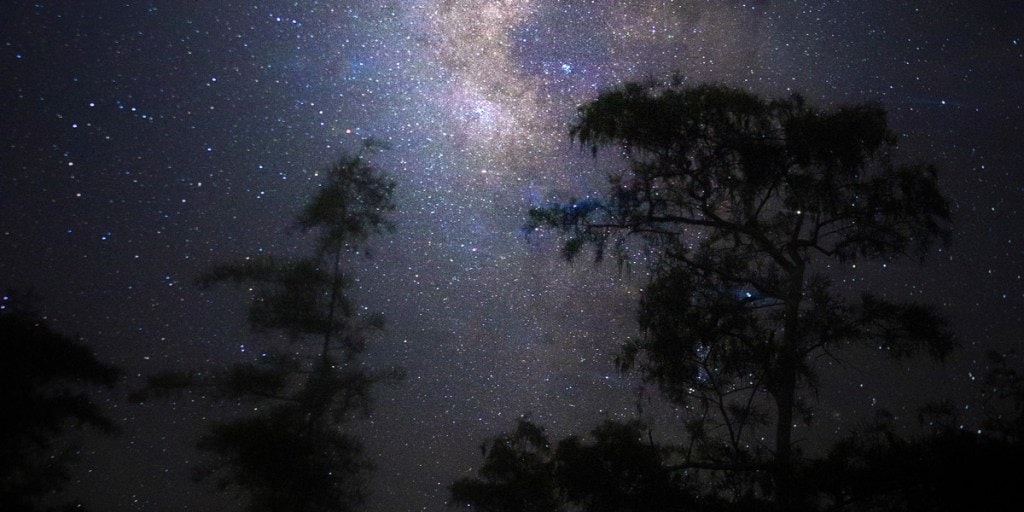
Owyhee Canyonlands, Oregon
According to the Campaign for the Owyhee Canyonlands, there is no region in the U.S. farther from major highways than the rugged canyonlands near the intersection of Oregon, Idaho and Nevada. Given its high elevation and distance from major cities, the Owyhee Canyonlands are among the most pristine places in the U.S. to stargaze and glimpse the Milky Way.
The 4.6-mile-long Three Forks and a Soak hike offers a fitting introduction to the region. On the trail, you’ll walk between sheer canyon cliffsides, make two river crossings and end up at Three Forks Hot Springs. At roughly 99 degrees year-round, the pools are heated by geothermal vents along the river bed and are nestled near the confluence of three Owyhee River tributaries.
Backpackers and intrepid campers have established a few primitive campsites, which you can use for stargazing. For something slightly more developed, angle for a night at Succor Creek State Natural Area or Slocum Creek Campground in the heart of the Owyhee. Once the sun sets, you won’t have much light pollution to contend with.
Artist Point, Washington
Not far from the Washington-Canada border, the North Cascade Range dazzles outdoor enthusiasts all year long. But the fun shouldn’t stop when the sun goes down. The region’s remote location, at least 90 minutes from the nearest big city, leads to clear night skies and stunning star displays.
And there may be no finer place to take it all in than from the Artist Point trailhead at the end of Mount Baker Highway. Adding to the charm are the craggy peaks that seem close enough to touch. Mount Shuksan sits to the east, while Mount Baker (also known as Kulshan) sits to the southwest. Watch for shooting stars and try to point out constellations above the peaks from the massive parking area or (with the help of a flashlight) head onto some of the surrounding trails for an even darker night-sky experience.
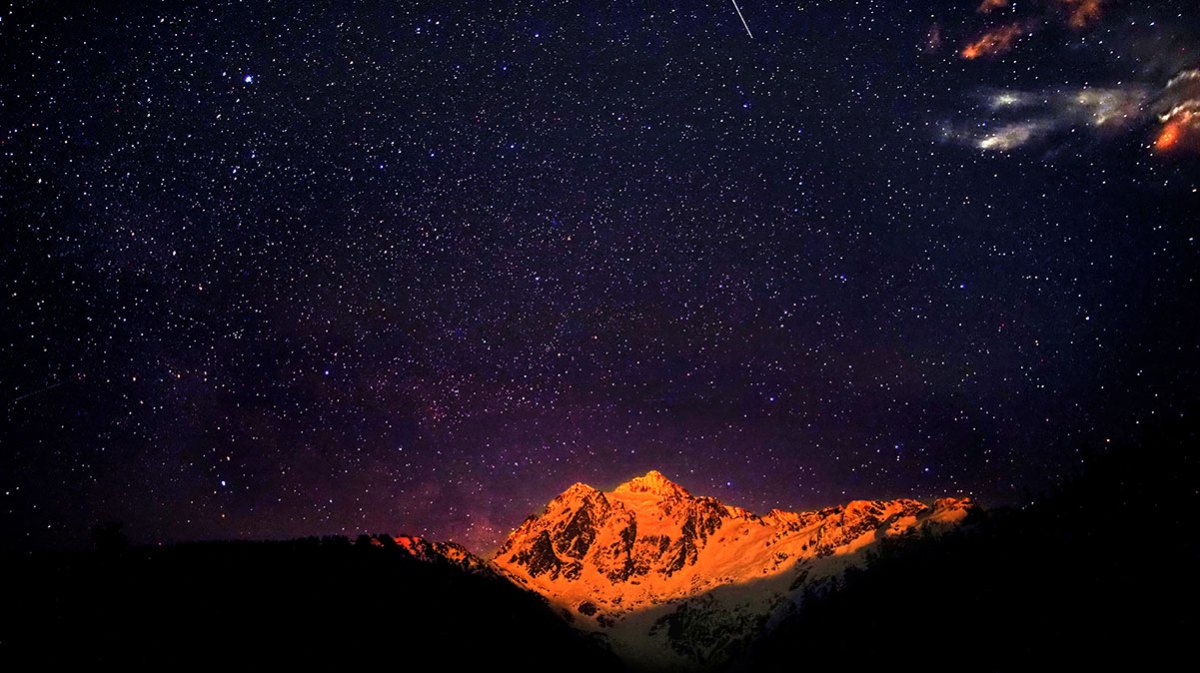
Antelope Island State Park, Utah
We could have chosen any one of a dozen locations throughout Utah for stunning stargazing. But Antelope Island State Park is one of a kind. Little development intrudes on the park (limiting light pollution). And its western views look out over the pristine Great Salt Lake, home to some of the darkest night skies in Utah.
Take in the scenery from atop Frary Peak, the highest point on Antelope Island. At more than 6,500 feet above sea level, the summit offers unparalleled views of the Great Salt Lake and the surrounding valley.
Cherry Springs State Park, Pennsylvania
While much of the eastern seaboard is too populated for flawless stargazing, Pennsylvania’s Cherry Springs State Park marks one of the most sought-after sites for dark skies and clear views.
Located 4.5 hours from Philadelphia, Cherry Springs sits on top of the Allegheny Plateau, more than 2,000 feet above sea level in the remote Susquehannock State Forest. The park’s Astronomy Field offers an unobstructed, 360-degree panorama of the night sky. Reserve one of 30 campsites for overnight visits. Or plan your trip for one of the park’s twice-yearly star parties.
Looking to stretch your legs? The one-mile Cherry Springs Working Forest Interpretive Trail offers an easy stroll through the surrounding woods. Several interpretive panels along the way explain the environmental, social and economic benefits of forests.
Anza-Borrego Desert State Park, California
Inside 600,000-acre Anza-Borrego, rangers and astronomers lead night-sky tours where you’ll learn about eclipses and phases of the moon. The nearby town of Borrego Springs has worked to reduce streetlight pollution by swapping out too-bright bulbs and encouraging businesses and homeowners to turn off lights at night.
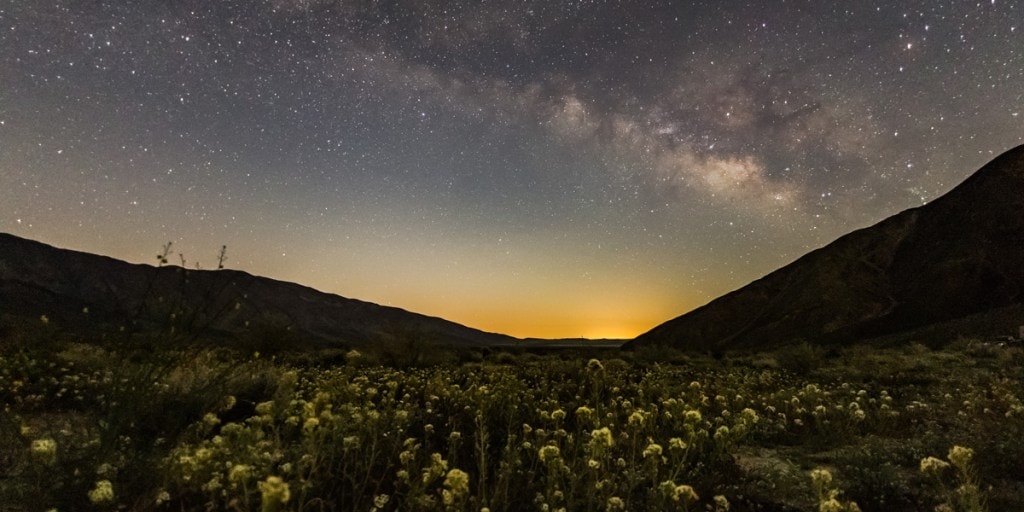
Death Valley National Park, California
Death Valley National Park in Southern California and Nevada is known for its brooding desert landscapes and extreme temperatures. The remote conditions also make Death Valley a pristine stargazing location.
Made possible by the erosion of the nearby Cottonwood Mountains, the wavy dunes at Mesquite Flat Sand Dunes are exactly what you envision when you think of the desert. They’re more accessible than other dunes within the park; the tallest is only about 100 feet, making the region popular for hikers and dune boarders alike. That accessibility, unobstructed views, and wide expanse make Mesquite Flats an ideal stargazing location.
Elsewhere, hikers can take in panoramic vistas of Death Valley from atop Dante’s View. More than a mile above sea level, the elevation ensures a lack of obstructions in every direction.
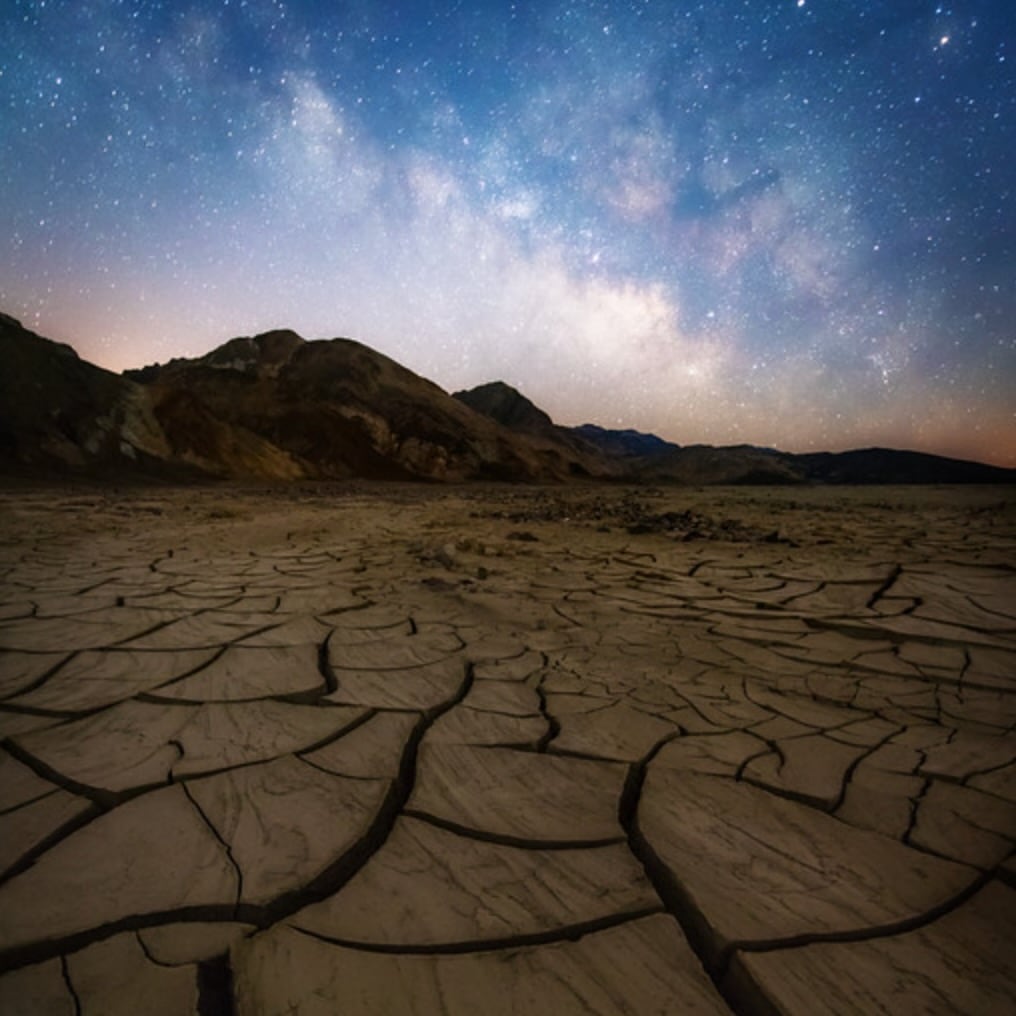
Cape Hatteras National Seashore, North Carolina
The only thing better than a day at the beach? A night of stargazing on the sand.
Start your day with a mostly flat 4.7-mile hike on the Cape Hatteras Point Loop. The trail is home to numerous coastal birds, scores of seashells, animals, and wildflowers. Two ocean currents, the Gulf Stream from the south and the Labrador Current from the north, merge to create constantly-changing sandbars in the area.
Sea turtles are a summertime presence along the Cape Hatteras National Seashore. Bioluminescent plankton occasionally light up the surf after sunset, and four campgrounds look out over the dunes.
Newport State Park, Wisconsin
Near the northern shores of Lake Michigan, Newport State Park sits at the northern tip of the nearly 80-mile-long Door Peninsula as it juts out into the massive body of water. That helped it earn the coveted Dark Sky Park designation from the International Dark-Sky Association—only the second park in the Midwest to do so.
The park boasts impressive night skies, unobstructed views of the eastern horizon and almost no artificial light sources. (In fact, campers are encouraged to dim phone screens and lanterns to minimize light pollution.) Occasional education programs help visitors understand the satellites, stars, planets and other celestial objects they’re seeing.
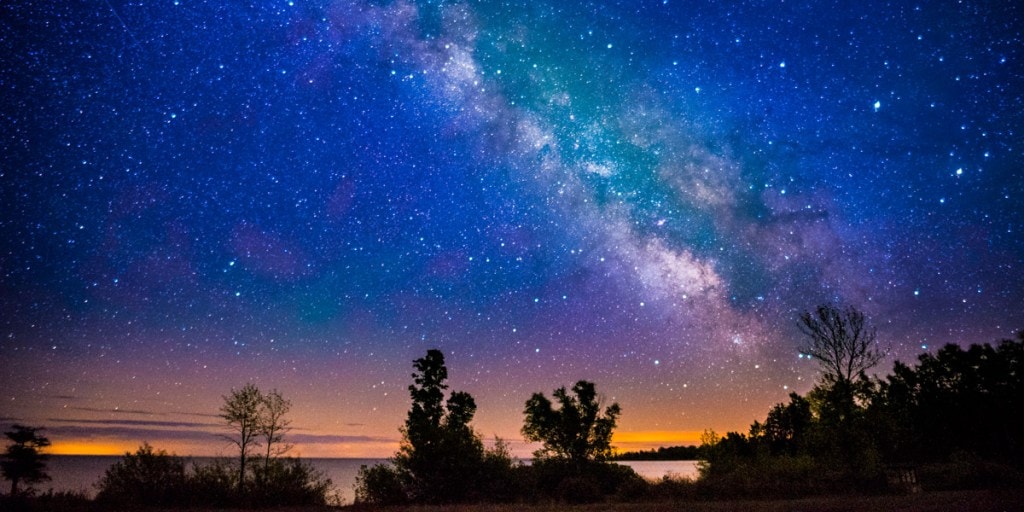
Stephen C. Foster State Park, Georgia
Stephen C. Foster State Park, nestled in southeastern Georgia, is far from the biggest park in this piece; at just 120 or so acres, it’s smaller than Disneyland. But what it lacks in size, the park makes up for with incredible stargazing opportunities.
And for that, we can thank the park’s status as the primary entrance to the Okefenokee Swamp—the largest blackwater swamp in North America; not just that, but the surrounding Okefenokee National Wildlife Refuge adds another buffer between the park and nearby communities. And given how hard it is to develop a swampy area, the state park and its surroundings are thankfully bereft of light pollution.
So celebrated is Stephen C. Foster for striking celestial views, it was designated a Dark Sky Park in 2016 by the International Dark-Sky Association. These days, campers staying in one of the park’s nine cottages and 63 campsites can enjoy ranger-led telescope viewing opportunities, especially when meteor showers are present.
Great Sand Dunes National Park, Colorado
Thanks to its location in the high desert of the San Luis Valley and a base elevation of 7,520 feet, Great Sand Dunes has some of the clearest, darkest skies in the West. The park hosts a number of free programs after hours, including laser-guided constellation tours.
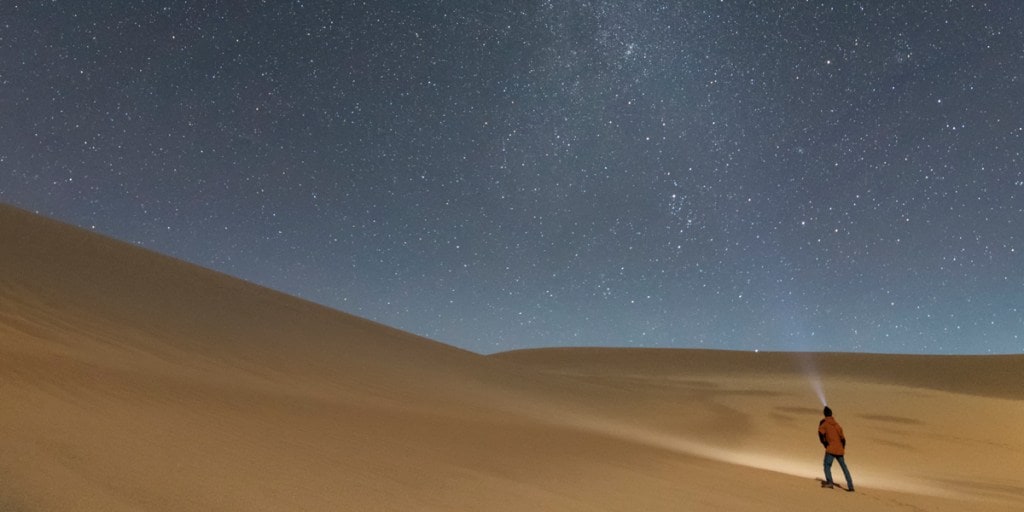
Indiana Dunes National Park and Indiana Dunes State Park, Indiana
A common thread on this list is just how remote most of these parks are. Many of the spots we’ve highlighted so far are at least a half-day drive from the nearest city or town.
Not so at Indiana Dunes National Park and Indiana Dunes State Park, neighboring parks just 45 minutes from the Chicago metro area on the southern shore of Lake Michigan. In fact, the national park abuts the town of Beverly Shores, which in 2014 was named the world’s seventh International Dark Sky Community by the International Dark-Sky Association—owing largely to residents’ efforts to preserve the area’s dark night skies.
When weather permits, events at both parks allow telescope viewing of meteor showers, star clusters, planets, and more. Local astronomers and naturalists with the Calumet Astronomical Society, for instance, lead events at Indiana Dunes State Park and give talks (aided by laser pointers) that explore and explain constellations. Even if an event isn’t happening, Kemil Beach at Indiana Dunes National Park makes a stunning (and surprisingly subdued) place to check out the night sky. Grab a pair of binoculars and download an optional mobile app such as Sky Guide for iOS devices or SkySafari for Android devices.
Central Idaho Dark Sky Reserve, Idaho
In late 2017, the International Dark-Sky Association officially designated 1,400 square miles of land as the Central Idaho Dark Sky Reserve. It was the first such designation in the U.S. and at the time, one of only 12 in the world. In doing so, it recognized the work advocates have done for years to protect some of Idaho’s most popular destinations—such as Ketchum, Sun Valley and the Sawtooth National Recreation Area—from growing light pollution. So dark are portions of the reserve that it’s possible to see the Milky Way while driving area highways after dark.
But if you’d rather get out of your car and enjoy a night under the stars, several destinations offer that opportunity. The small Pioneer Park, for instance, sits on a hill above Stanley. The elevation puts it above the community’s sources of light pollution and affords 360-degree views of the surrounding Sawtooth Mountains. Further afield, a historic resort and a handful of campgrounds sit near or alongside Redfish Lake, which is more than a mile above sea level. That high elevation coupled with a lack of light pollution leads to dazzling displays after the sun goes down.
Valle de Oro National Wildlife Refuge, New Mexico
In 2019, the Valle de Oro National Wildlife Refuge—just a 15-minute drive from Albuquerque—was named the International Dark-Sky Association’s first-ever Urban Night Sky Place. The 560-acre refuge, housed on the site of a former dairy farm next to the Rio Grande River, installed fully shielded lighting, implemented motion sensors and minimized the use of blue lights (which can be harmful to nocturnal animals). Visitors can view the skies on their own from along the refuge’s short trails—or alongside local astronomers armed with telescopes at special events throughout the year.
Part of what makes the refuge such a fun stargazing destination is its proximity to Albuquerque. But if you’re looking for something more far-flung, consider Chaco Culture National Historical Park in the northwest corner of the state. More than 99 percent of the International Dark Sky Park, designated as such by the International Dark-Sky Association, is considered a “natural darkness zone,” which means no permanent lighting exists around most of Chaco. Interpretive programs are occasionally offered to show off the starry skies and educate visitors on the importance of limiting light pollution.
Megan Michelson contributed to this article.
Editor’s Note: This article was originally published in 2017, and was last updated in August 2022.
